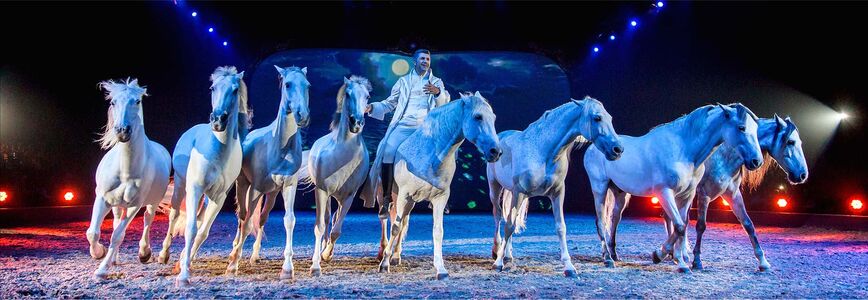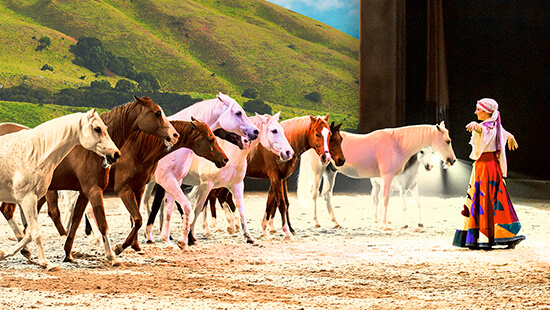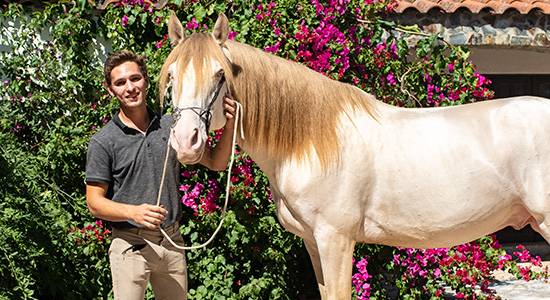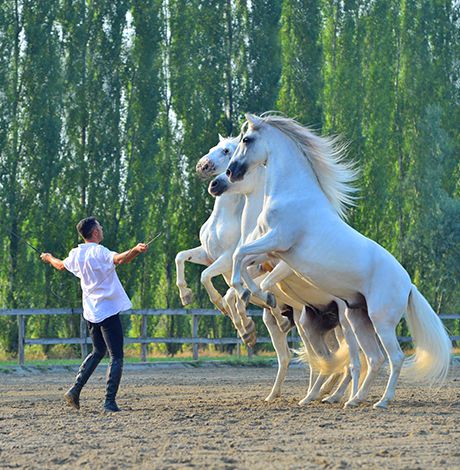
It is one of the most popular riding styles - liberty dressage. Learn more about the impressive work with horses, which is mainly carried out from the ground.

Sylvie Wilms with her horses at CAVALLUNA
An invisible bond and complete trust between man and horse - liberty dressage.
To work with a horse completely freely, to communicate with it at eye level and to do so without the usual aids such as bridles or saddles: this is the dream of many horse lovers. The ease with which freedom artists like Bartolo Messina or Kenzie Dysli let their horses learn and perform difficult lessons, guided only by body language and voice, is impressive and demanding at the same time. Because what looks so carefree requires a long relationship with the horse, deep trust and lots of training.

The term, also called horse liberty or just liberty, describes a type of dressage. Unlike the High School, this dressage has nothing to do with riding itself, but takes place from the ground. In ground work, the body language of the human being is particularly important, who guides the horse through the use of voice and hand signals. A whip is also one of the aids, while a lunge or auxiliary reins are only used at the beginning of the training. A clicker can also be used as positive reinforcement when working with the horse.
A trusting relationship between human and horse is essential for learning lessons such as lunging (walking in a circle), complimenting (bowing), lying down or plié. Especially the latter exercises belong to liberty dressage without locomotion.

Alex Giona knows exactly which of his grey horses have which strengths and promotes them.
With a lot of passion, patience and horse know-how, one must gradually approach the individual tasks of liberty dressage. For example, the artist must recognise where the strengths of his own horses lie. This becomes a challenge especially when you work with several horses at the same time, which can of course differ considerably in character. For example, the self-confident stallion sometimes needs clearer commands, while the mare always wants to please and offers a lot on her own. Communication and interaction between man and horse are all the more important here.
If the trainer knows this, wonderful figures and formations can be shown on or over the ground during ground work. But also individual lessons, such as the Spanish walk or even a capriole are no problem for many animals.
Despite the playful component, however, free work with horses requires a lot of discipline: daily training is indispensable, as is a feeling for how much is enough and when the horses need a break. After all, nothing is more beautiful than seeing the beautiful animals freely and happily show grandiose lessons.